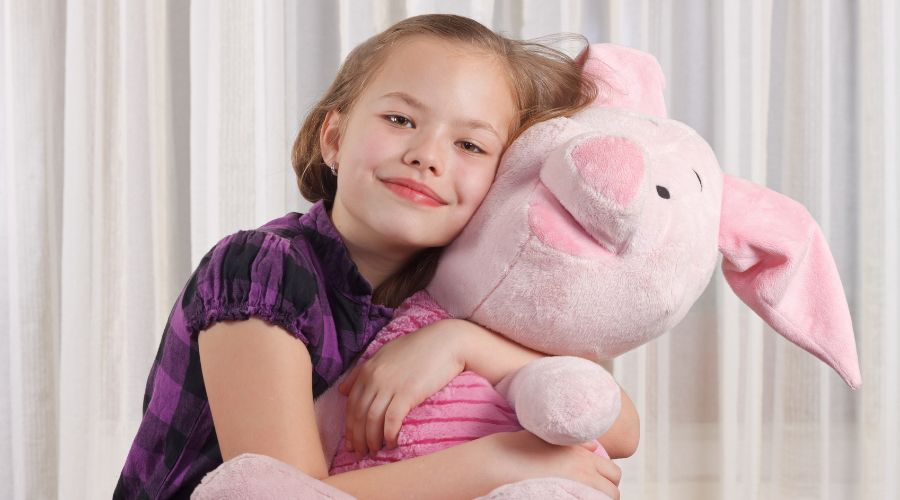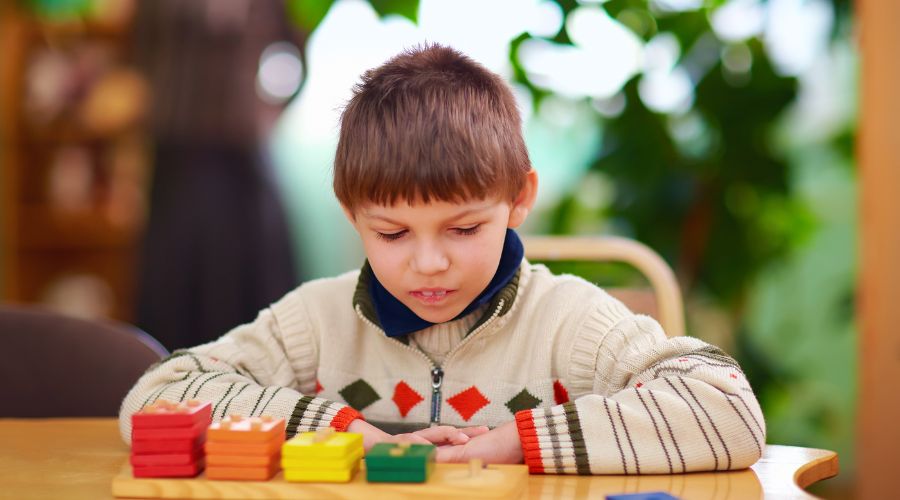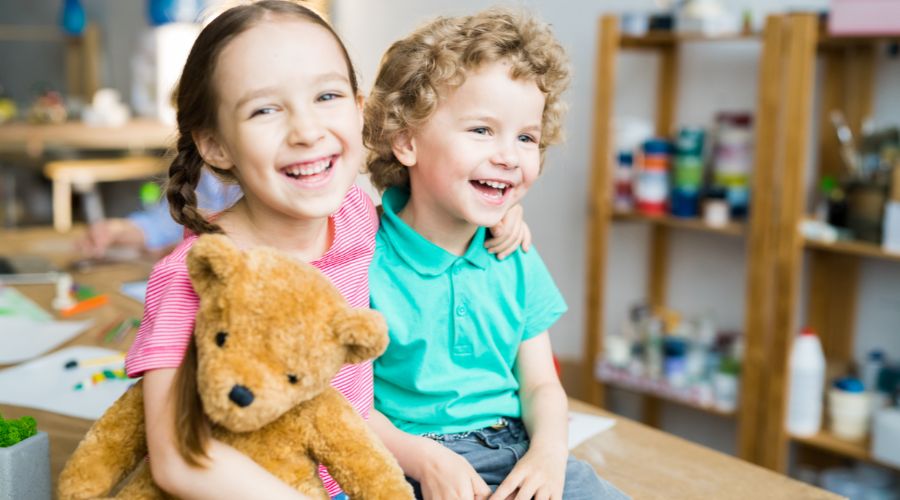Parents, psychologists, and educators have all been fascinated by children’s fascination with stuffed animals for many years. Kids build an intense attachment with these cuddly buddies as soon as they acquire their first plush toy, frequently creating lifelong friendships and finding solace in their company. Although it may appear to be a straightforward and unimportant preference, there are scientific explanations for why kids are so fascinated by stuffed animals. We can learn more about the psychological foundations of this enduring passion by examining the areas of attachment, imagination, and emotional growth. This blog will explore the scientific justifications for why youngsters adore stuffed animals and how important these toys are to a child’s development and well-being.
1. Comfort and Security

Children have basic needs for protection and comfort, especially during difficult or uncertain circumstances. Due to their ability to instill a sense of security and comfort, stuffed animals are a vital component in addressing these requirements. Children find it relaxing to touch and hold stuffed animals because of their soft, velvety texture. These toys’ soft pressure and cuddliness can simulate the experience of being held or embraced, which can be incredibly comforting for kids, especially during times of stress or sorrow.
Additionally, for kids, stuffed animals frequently serve as transitional items, bridging the gap between the known and the unknown. According to research, kids frequently develop strong ties to these things and rely on them for comfort and security when they are separated from their parents or when they are put in unfamiliar or difficult circumstances. Having a cherished stuffed animal at their side can serve as a concrete reminder of the security and comfort of home for kids who are experiencing separation anxiety, such as when starting preschool or spending time away from their parents. The presence of the stuffed animal acts as a source of emotional stability, helping children feel more secure and reducing their anxiety in unfamiliar environments.
2. Emotional Connection

Stuffed animals occupy a special place in a child’s emotional landscape because they transcend the status of inanimate objects to become much more. With their stuffed animals, kids frequently develop strong emotional bonds and treat them as confidants, pals, and companions. The imaginative play that kids do with their stuffed animals encourages this emotional bond. In order to create a universe of interactions and tales that represent their own desires and emotions, they project their own feelings, thoughts, and experiences onto these toys.
Children gain empathy through this imaginative play by imputing feelings and thoughts to their plush animals. They develop empathy by learning to comprehend and take into account the needs and viewpoints of their cuddly friends. Children can analyze and make sense of their own feelings with the help of this technique of projecting emotions onto their stuffed animals and investigating various scenarios. Children can express and explore a variety of emotions, from joy and enthusiasm to grief or anger, using stuffed animals as a safe medium.
3. Symbolic Representation

Children have access to a flexible and adaptable instrument for symbolic expression in stuffed animals. These stuffed toys, whether they depict actual animals or made-up creatures, provide a blank canvas for kids’ imaginations, enabling them to explore and make sense of the world in a fun and imaginative way. Children frequently attach certain traits, mannerisms, and personalities to their stuffed animals, which gives up a world of opportunities for problem-solving and emotional expression.
When kids use their stuffed animals for imaginative play, they are free to give them any characteristics they want. Children could regard their stuffed animals as courageous, fierce, or bashful, depending on the animal. Children can explore many emotions, social situations, and scenarios by doing this. They may play numerous parts, such as buddy, protector, or carer, which helps them comprehend and negotiate varied social dynamics
4. Comforting Routines

Stuffed animals used in soothing rituals have a big part to play in giving kids a sense of predictability, stability, and familiarity. These habits frequently develop into beloved rituals that provide solace and certainty, especially during times of stress or change. Many kids have a nighttime ritual that involves cuddling with their stuffed animals to make them feel safe and reassured before going to sleep. Any apprehension or worries related to nighttime are allayed by the constant and reassuring presence of their favorite fuzzy buddy.
Similarly, bringing stuffed animals along on outings or daily activities can provide a sense of familiarity and security for children. Whether it’s taking their favorite plush friend to the park, on a car ride, or to school, the presence of the stuffed animal serves as a source of emotional support and companionship. This routine can be especially valuable during transitional periods, such as starting a new school or moving to a new environment, where having a familiar object like a stuffed animal can help alleviate anxiety and provide a sense of continuity.
5. Sensory Stimulation

Stuffed animals provide children with valuable opportunities for sensory stimulation, which is essential for their sensory and cognitive development. The variety of textures, shapes, and sizes found in different stuffed animals encourages children to engage in tactile exploration. They can feel the softness of the fur, the smoothness of the fabric, or the different textures incorporated into the design. This tactile experience not only stimulates the sense of touch but also helps children refine their fine motor skills as they learn to grasp, squeeze, and manipulate the plush toys.
Children learn sensory integration techniques by exploring their teddy animals’ textures. They develop the ability to interpret and process various sensory cues, such as the feel of the toy’s near proximity to their bodies or the feel of the fur against their skin. They are better able to navigate and react to sensory stimuli in their surroundings thanks to the integration of their sensory data, which also improves their general sensory processing ability. Additionally, playing with plush animals helps improve kids’ cognitive ability. They learn to recognize objects as they investigate the many aspects and qualities of the toys.
6. Transitional Object Benefits

Children’s stuffed animals are essential transitional items that help them make the move from reliance to independence. When youngsters are apart from their parents or are exposed to new and unsettling settings, these objects can provide comfort and support. A cherished stuffed animal can give a youngster a sense of continuity and security by serving as a physical connection to their primary carers and their cozy home.
During times of separation, such as starting school or daycare, children may experience separation anxiety or feelings of insecurity. Having their stuffed animal by their side can help ease these emotions and provide a sense of familiarity and reassurance. The plush companion acts as a reliable and constant presence, offering comfort and support in the absence of their parents or caregivers. This transitional object allows children to develop a sense of trust and confidence in their ability to navigate new experiences independently while knowing they have a source of comfort readily available.
7. Emotional Regulation

Stuffed animals play a significant role in helping children regulate their emotions. Research has shown that engaging with stuffed animals can have a calming effect on children, reducing stress and anxiety levels. When children interact with their stuffed animals, they often find solace and comfort in talking to them or hugging them tightly, which can provide a sense of emotional support and security.
The act of expressing emotions to a stuffed animal allows children to externalize their feelings in a safe and non-judgmental way. They may confide in their plush companions, sharing their thoughts, worries, or fears. This form of emotional expression helps children process their emotions and provides an opportunity for self-reflection. By verbalizing their feelings, children can gain a better understanding of their emotions and develop strategies to cope with them effectively.
8. Social and Language Development

Children’s social and linguistic growth is significantly aided by stuffed animals. With these toys, pretend play allows kids to have discussions and write imaginative stories, which helps them develop their language abilities and vocabulary. Children have the chance to practice utilizing language in a relevant and dynamic setting as they play pretend games with their stuffed animals. They might have conversations, giving their stuffed animals voices and personalities, and they might tell stories, creating inventive plots. Children can explore and play with language in this process, which also helps them improve their communication skills and vocabulary.
Furthermore, stuffed animals provide a platform for children to practice social interactions and develop their social skills. Through pretend play with their plush companions, children can take on different roles and experiment with various social scenarios. They may act out everyday situations, such as going to school or having a tea party, or they may engage in imaginative scenarios involving their stuffed animals. By doing so, children learn about turn-taking, sharing, cooperation, and empathy as they navigate social interactions within the context of their play. Stuffed animals become participants in these social interactions, allowing children to practice and refine their social skills in a safe and supportive environment.
Conclusion
There are numerous scientific reasons why kids love stuffed animals. These toys provide comfort and security, fostering emotional connections and promoting empathy, social skills, and a sense of responsibility. Stuffed animals serve as symbolic representations, enabling children to explore the world and develop problem-solving skills. They offer comforting routines, and sensory stimulation, and act as transitional objects that bridge the gap between dependence and independence. Additionally, stuffed animals help children regulate their emotions, develop language and social skills, and form secure attachments. Overall, understanding these scientific reasons helps us recognize the significant role that stuffed animals play in children’s lives, supporting their emotional well-being, cognitive development, and social growth.

